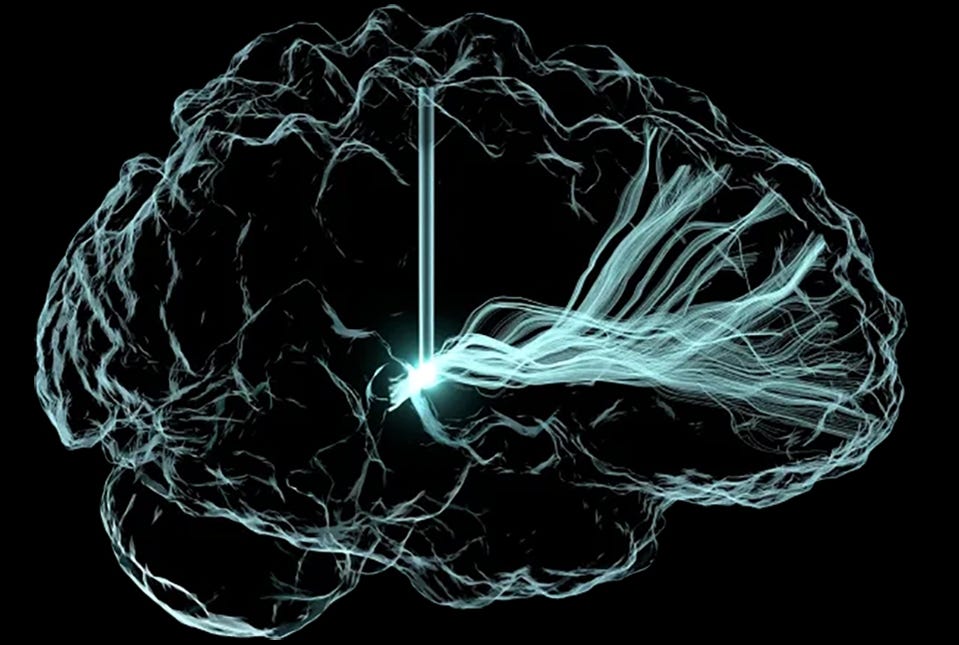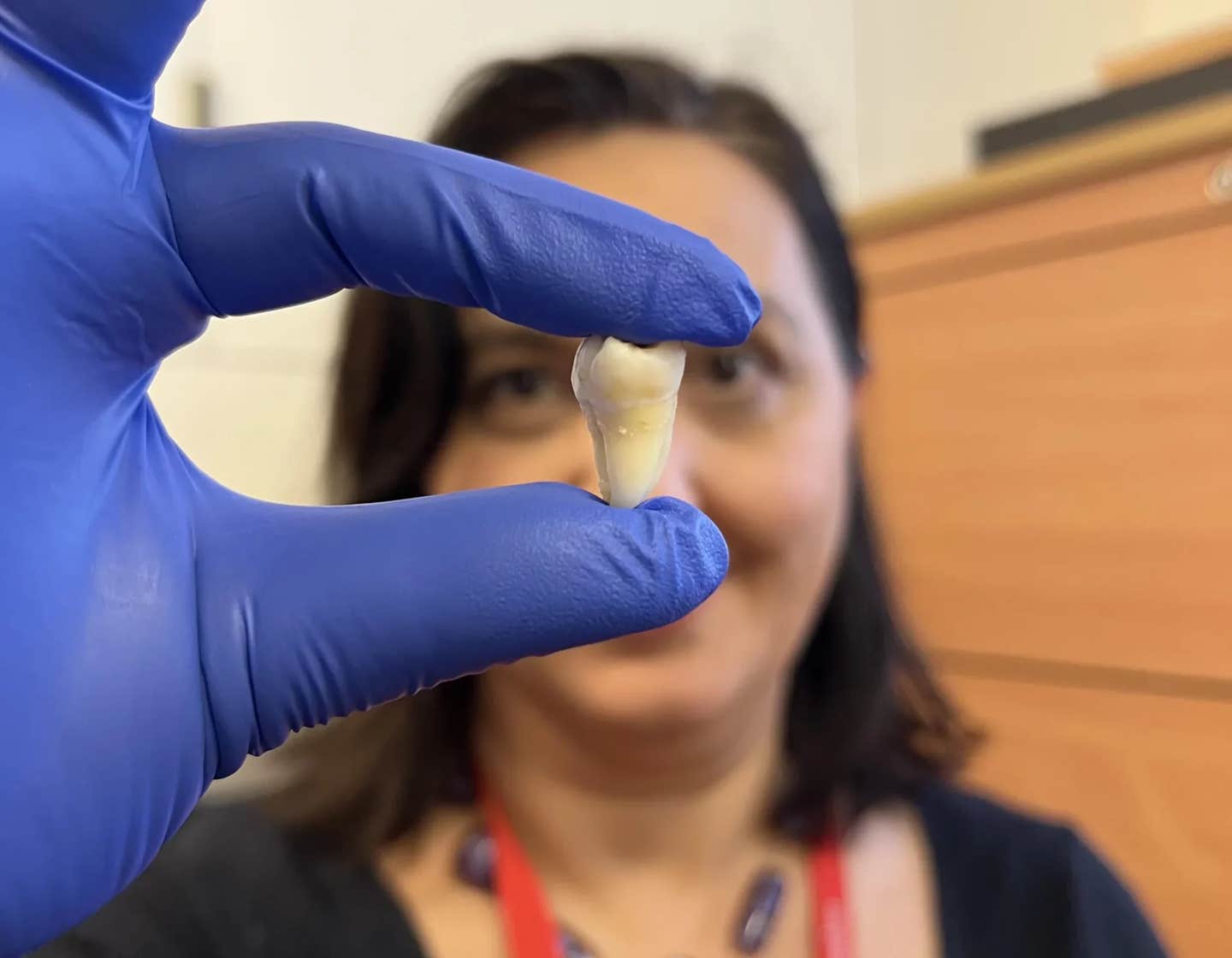The Remarkable Success of New Brain Injury Implant: Patients Choose to Keep Them On
A revolutionary deep brain stimulation implant has brought renewed hope to individuals suffering from debilitating head injuries

[Dec. 5, 2023: JD Shavit, The Brighter Side of News]
Light-based rendering of deep brain stimulation's electrical excitation of neuronal fiber pathways to treat patients with traumatic brain injury. (CREDIT: Andrew Janson, Butson Lab)
In a major leap forward for neuroscience and medical technology, researchers at Stanford University have unveiled a revolutionary deep brain stimulation implant that has brought renewed hope to individuals suffering from debilitating head injuries. The remarkable success of this groundbreaking device has not only restored functionality and quality of life for its trial participants but has also left them reluctant to part with the transformative technology.
Designed to reignite activity within key brain regions responsible for consciousness, learning, memory, thinking, and problem-solving, this implant represents a beacon of optimism in the field of neurorehabilitation. During early trials, five individuals who had endured the consequences of brain injuries reported astonishing improvements in their cognitive abilities and daily lives, demonstrating the extraordinary potential of this innovative therapy.
A Triumph of Restored Potential
The deep brain stimulation implant, meticulously crafted and implemented by a team of dedicated researchers, offers renewed hope to those who had previously faced limited prospects for recovery. Participants in the trial shared stories of newfound abilities that had once been distant dreams, painting a vivid picture of the transformative power of this groundbreaking technology.
Related Stories
Gina Arata, one of the trial participants, had experienced a traumatic brain injury following a devastating car accident in 2001. Her life was marked by an inability to remember, frequent accidents, and uncontrollable bursts of anger. "I couldn't remember anything. My left foot dropped, so I'd trip over things all the time. I was always in car accidents. And I had no filter – I'd get p---ed off really easily," she recounted.
However, since the implantation of the revolutionary device, Arata's life has been profoundly altered for the better. "Since the implant, I haven't had any speeding tickets. I don't trip anymore. I can remember how much money is in my bank account. I wasn't able to read, but after the implant, I bought a book. And I don't have that quick temper," she joyfully exclaimed.
A Glimpse into the Dimmed Lights of the Brain
The researchers, led by Dr. Jaimie Henderson, a distinguished professor of neurosurgery, meticulously selected patients for the trial whose brain pathways were believed to be still intact but operating at a significantly reduced capacity. It was as if the lights had been dimmed within their brains, rendering their cognitive processes inefficient and insufficient.
"In these patients, those pathways are largely intact, but everything has been down-regulated," explained Dr. Henderson. "It's as if the lights had been dimmed, and there just wasn't enough electricity to turn them back up."
Drawing inspiration from this analogy, the research team embarked on a mission to rekindle these dimmed lights through precise electrical stimulation of specific brain areas. To achieve this, they created virtual models of each participant's brain, allowing them to simulate stimulation at various locations before the actual surgery.
With these meticulously devised models as their guiding light, Dr. Henderson and his team implanted the devices in five participants ranging from 22 to 60 years old, all of whom had sustained brain injuries between three and 18 years earlier. Following the implantation, the patients underwent a period of adjustment lasting two weeks, after which they experienced 90 days of daily stimulation for 12 hours each day.
Restoring Light and Hope: Remarkable Outcomes
The outcomes of this pioneering therapy were nothing short of astonishing. At the conclusion of the 90-day treatment period, participants had achieved an average increase in their mental processing speed of an astounding 32 percent. The implant enabled patients to reclaim activities that had once been considered impossible, such as reading books, watching television series, playing video games, or completing homework assignments. Fatigue became less of a burden, and the need for daytime napping diminished significantly.
Cortical evoked responses for each individual from the left and the right hemisphere. (CREDIT: Nature Medicine)
Perhaps the most striking evidence of the implant's efficacy was revealed when one participant was chosen at random to have their device deactivated for three weeks. During this period, their mental processing speed plummeted by an alarming 34 percent, underlining the profound impact of this groundbreaking technology on their cognitive abilities and overall well-being.
A Pioneering Moment with Promise
Dr. Nicholas Schiff, a distinguished professor at Weill Cornell Medicine and co-senior author of the study, aptly characterized this breakthrough as a "pioneering moment." He expressed an unwavering commitment to transforming this remarkable discovery into a therapeutic reality, one that could revolutionize the landscape of neurorehabilitation.
"Our goal now is to try to take the systematic steps to make this a therapy. This is enough of a signal for us to make every effort," stated Dr. Schiff. With a resounding vote of confidence from both researchers and participants, the path forward seems to hold the promise of a brighter, more hopeful future for countless individuals impacted by head injuries and their ensuing challenges.
The groundbreaking success of the deep brain stimulation implant offers a resounding testament to the potential of human ingenuity and compassion. Beyond its innovative technological aspects, this remarkable achievement embodies the very essence of scientific discovery driven by a profound desire to alleviate human suffering.
The journey of recovery for individuals with head injuries is often characterized by daunting challenges, as they grapple with the far-reaching consequences of impaired cognitive function. The implant's ability to not only address these challenges but also reignite the light of hope in the lives of those affected is a testament to the limitless possibilities that lie at the intersection of science and humanity.
Unveiling the Future of Neurorehabilitation
As we stand witness to this extraordinary moment in medical history, the implications of this breakthrough extend far beyond the confines of a research laboratory. The deep brain stimulation implant has the potential to redefine the boundaries of neurorehabilitation, offering new avenues of recovery for individuals who have long faced insurmountable obstacles.
The promise of this technology lies not only in its ability to enhance cognitive function but also in its capacity to restore dignity and independence to those who have been robbed of these essential qualities by head injuries. Through precise electrical stimulation, the device rekindles the neural pathways that were once deemed lost, offering renewed hope and opportunities for a brighter future.
The research conducted by Stanford University heralds a new era in the field of neurorehabilitation, one where the boundaries of possibility are pushed to unprecedented heights. The profound impact of the deep brain stimulation implant on the lives of its trial participants is a testament to the limitless potential of human innovation and compassion.
As the scientific community rallies behind this pioneering breakthrough, it is imperative that we remain steadfast in our commitment to transforming this discovery into a widely accessible therapy. With dedication and determination, we can harness the power of science and technology to illuminate the path forward for countless individuals living with the aftermath of head injuries.
In the words of Dr. Nicholas Schiff, this is not just a scientific achievement; it is a beacon of hope, guiding us toward a future where recovery knows no bounds and where the light of possibility shines brighter than ever before.
Note: Materials provided above by The Brighter Side of News. Content may be edited for style and length.
Like these kind of feel good stories? Get the Brighter Side of News' newsletter.
Joshua Shavit
Science & Technology Writer | AI and Robotics Reporter
Joshua Shavit is a Los Angeles-based science and technology writer with a passion for exploring the breakthroughs shaping the future. As a contributor to The Brighter Side of News, he focuses on positive and transformative advancements in AI, technology, physics, engineering, robotics and space science. Joshua is currently working towards a Bachelor of Science in Business Administration at the University of California, Berkeley. He combines his academic background with a talent for storytelling, making complex scientific discoveries engaging and accessible. His work highlights the innovators behind the ideas, bringing readers closer to the people driving progress.



